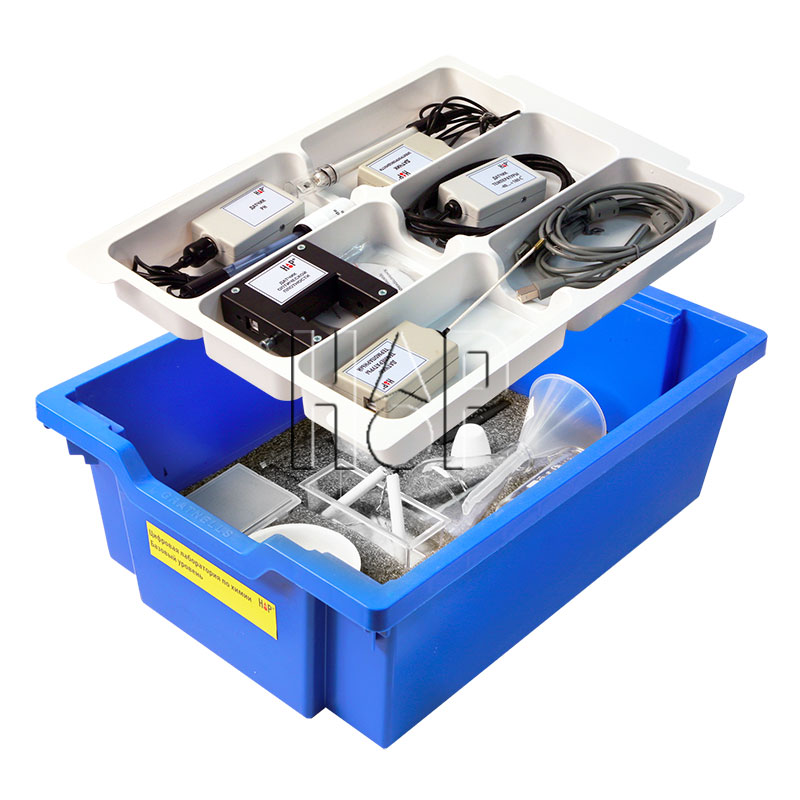Digital Laboratory For Studies In Chemistry supports assignments in 8 to 9 grades of high school following general study program and in 10 to 11 grades of high school studying the basic program. It also supports student project-based assignments. It facilitates deeper involvement of students with the subject matters by making experimentation more live and dynamic. This fully functioning laboratory satisfies the National Educational Requirements and assures fulfillment of interdisciplinary study requirements using modern digital technologies applied to education.
The laboratory suit includes detailed guidance with step-by-step instructions, including on video for conducting experiments. The accompanying software is regularly updated through easily accessible website. This program enables data download from the sensors to computer, storing data records in either automatic or manual mode, putting together electronic reports on experiments supplied with initial data, photo and video records, templates of the tables, graphs and text comments.
Samples of basic level laboratory works for 8th grade
Fundamental notions of chemistry
- Studying structure of flame
- Measuring temperature of boiling water
- Measuring temperatures of melting and crystallizing for metals
- Heat emission and absorption
Solutions and solvability
- Monitoring growth of crystals
- Oversaturated solution
- Decomposition of crystal hydrate
Classes of non-organic chemical substances
- Acids and bases-indicators and ph substances/solutions
- Measuring ph of different environments
- Formation of sulphate of copper
- Neutralization reaction
Samples of basic level laboratory works for 9th grade
Chemical bond
- Existence of compounds with non-molecular lattice structure
Electrolytic dissociation
- Electrolytes and non-electrolytes
- How s solvent affects dissociation
- Strong and weak electrolytes
- General properties of ammonia
Rate of chemical reactions
- Determining rate of chemical reaction
- Rate of chemical reaction as a function of temperature and concentration
Reduction—oxidation reactions (Redox)
- Measuring ph during redox
- Comparative characteristics of metals as reductants
Non-metals
- Properties of sulphur oxide

